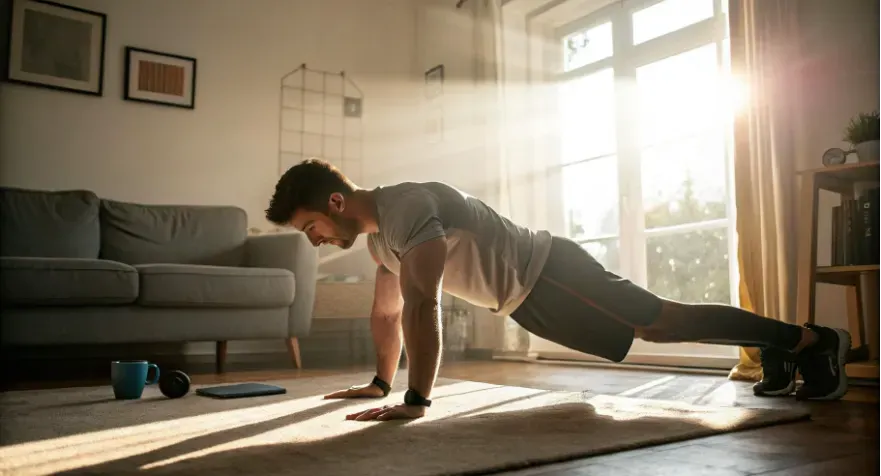Body Weight Exercises: Build Strength Anywhere, Anytime

Why Body Weight Exercises Deserve a Spot in Every Routine
Body weight exercises have stood the test of time for one simple reason — they work. Whether you're training in a fully equipped gym, a cramped apartment, or a patch of grass in your backyard, your body becomes the equipment. The beauty lies in their versatility and accessibility. No fancy machines, no gym membership — just gravity, a bit of space, and your own physical weight creating resistance.
They’re more than just an alternative when you can’t get to the gym. Done right, body weight movements can improve strength, mobility, balance, endurance, and even mental resilience. Think of it as going back to the basics, where push-ups and squats lay the foundation for a strong, capable body that moves well — not just looks good.
Benefits That Go Beyond the Burn
The advantages of body weight training stretch far beyond convenience. One major perk? Joint-friendly strength development. Because these movements engage multiple muscle groups at once, they promote natural movement patterns and reduce the risk of injury.
It’s also easier to develop real-world strength — the kind that translates to carrying groceries, climbing stairs, or sprinting for a bus. Plus, body weight workouts tend to raise your heart rate quickly, giving you a blend of strength and cardiovascular conditioning that torches calories and boosts endurance.
The Core Movements: No Gym Required
There are a handful of foundational body weight exercises that carry serious bang for their buck. These include:
- Push-ups (for chest, triceps, and shoulders)
- Squats (for glutes, quads, hamstrings)
- Lunges (for balance and unilateral leg strength)
- Planks (for core stability)
- Pull-ups (for upper back and biceps — if you’ve got a bar)
Mastering these basics creates a strong, adaptable base. They're easy to progress or regress based on your current fitness level, whether that means doing incline push-ups against a wall or advancing to explosive plyometric push-ups.
Progression Without Weights: Making It Harder
Think body weight training hits a ceiling? Not quite. Your body is a toolbox, and progression is just a matter of leverage, tempo, and range of motion. Want more intensity? Try:
- Slowing down your reps (eccentric focus)
- Adding isometric holds (like pausing at the bottom of a squat)
- Elevating your feet for decline push-ups
- Moving to single-limb variations (pistol squats, one-arm push-ups)
These subtle tweaks keep your muscles guessing and the gains coming — without touching a single dumbbell.
Building a Full-Body Body Weight Routine
A well-balanced body weight workout doesn’t need to be complicated. Aim for total-body coverage with push, pull, hinge, squat, and core elements. Here's a simple template to start:
- Push-ups – 3 sets of 10–15 reps
- Bodyweight Squats – 3 sets of 15–20 reps
- Glute Bridges – 3 sets of 15 reps
- Superman Holds – 3 sets of 30 seconds
- Forearm Plank – 3 rounds of 45–60 seconds
- Lunges (each leg) – 3 sets of 10–12 reps
Perform this 2–3 times per week, and gradually increase reps, sets, or time under tension. No gear, no excuses.
Common Mistakes That Stall Progress
It’s easy to overlook form when you're not lifting external weight, but poor mechanics can still cause setbacks. The biggest mistake? Rushing through reps. Quality trumps quantity every time — sloppy push-ups won’t build the chest or protect the shoulders.
Another frequent misstep is neglecting progression. If you’ve been doing the same 20 squats daily for three months, your body’s already adapted. Push for small changes. New angles, tempos, or advanced variations can keep your workouts effective and interesting.
How to Stay Consistent (Even When Motivation Dips)
Motivation will fluctuate — that’s a given. The key is to create a habit loop that makes exercise as automatic as brushing your teeth. Here’s what helps:
- Keep a short, go-to body weight circuit in your back pocket
- Stack it onto an existing routine (right after your morning coffee, for instance)
- Track your progress visually — nothing builds momentum like seeing reps increase over time
And remember, perfection isn’t the goal. Consistency — even in 10-minute chunks — gets results.
